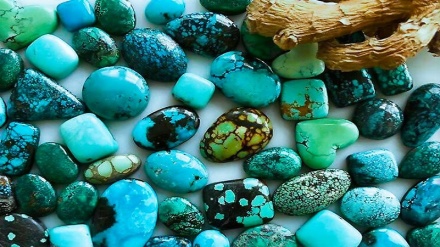Iranian Market (17)
Welcome to this episode of Iranian Market. In this edition, we are going to discuss Iranian beekeeping industry and honey.
More than one and a half million tons of honey is obtained from 81 million bee colonies worldwide. Iran is one of ten countries which is active in the field of beekeeping with regards to the number of colonies and producing high quality honey.
Bees are one of the most wonderful, beneficial, and generating creatures of God. These small insects are one of the elements of biological diversity in the world. Some believe that without bees, the existence of life in the world would be difficult because bees have an important role in pollination.
Pollination in trees and plants is transfer of pollen from a male plant to a female one, enabling fertilization and production of seeds, most often by an insect, animal or by wind. Pollination by bees is the most important way of fertilization in plants. For example, 90% of the pollination in fruit trees like apple and cherry trees is done by bees. This is while in some trees like almond tree the pollination is exclusively done by bees.
The economic value of pollination by bees is much more than honey and beeswax produced by this wonderful insect. Therefore, in some countries a great amount of money is paid to beekeepers to set up their beehives in gardens and farms. Professor Philip McCabe, from the International Federation of Beekeepers Associations (Apimondia) believes that removing bees from the production cycle would jeopardize the environment and bees are necessary for biological diversity and survival of humans.
There are more than 20 thousand species of wasps in the world and bees are one of those species which lead a social life.
By collecting and feeding on nectar, bees produce honey in beehives. Honey is a perfect food and appropriate remedy for any disease. The color of honey depends on the species of flower the bee has fed on. While some types of honey are dark in color, some others are light. Honey color ranges from nearly colorless to dark brown, and its flavor varies from delectably mild to distinctively bold, depending on where the honey bees buzzed. As a general rule, light-colored honey is milder in taste and dark-colored honey is stronger. It is said darker honey is rich in minerals in comparison with light-colored one.
The nutritional value of honey is high and it is a perfect food. The quality of honey depends on what plant bees choose to feed on. Bees instinctively distinguish between beneficial flowers and non-beneficial ones. They actually try to choose the best flowers and plants by the help of their olfaction.
In addition to having nutritional benefits, honey can be used as a remedy to many diseases. Honey contains minerals like phosphorus, calcium, iron, potassium, iodine, magnesium, lead, copper, Sulphur, nickel, zinc, and sodium which differ in amount in different types of honey. One kilogram of honey has more than 3000 calories. Honey also contains different types of enzymes, protein, amino acids, organic acids like formic acid as well as fragrances.
Formic acid is a natural antibiotic which heals many wounds especially in the mouth and throat. Honey also has antibacterial, anti-inflammatory and antioxidant properties.
More than one and a half million tons of honey is obtained from 81 million bee colonies worldwide. Iran is one of ten countries in the world which is active in the field of beekeeping with regards to the number of colonies and producing high quality honey.
According to the statistics of 2013, Iran's beekeeping industry ranked fourth in the world with respect to the number of bee colonies. Also in the same year the Islamic Republic stood at the eighth position in the quantity of honey produced. The Islamic Republic has an ideal climate for beekeeping. Beekeeping in Iran is possible throughout the year because it is a four-seasoned country.
Historically, the record of beekeeping industry in Iran dates back to several centuries BC. In the 20th century, this industry developed a lot in Iran. This development included replacement of beehives and introduction of new methods.
The industry of beekeeping in Iran is common in the provinces of East Azarbaijan, West Azarbaijan, Ardebil, Kordestan, Lorestan, Golestan, Mazandaran, and Isfahan.
The provinces of East and West Azarbaijan, located in the northwest of Iran, produce the best quality honey in the world. One of Iran’s famous honey brands is Sabalan which is produced in Ardebil Province.
West Azarbaijan Province produces more than 20 thousand tons of honey annually. This province has more than one million beehives and 6000 workforces as well as vast grasslands and modern factories which makes it possible to produce high quality honey and other products including beeswax, flower pollen, royal gel, and bee glue. For your information, bee glue has antibacterial effects. This product which is a natural antibiotic is used for testing the diseases related to the immune system.
ME


